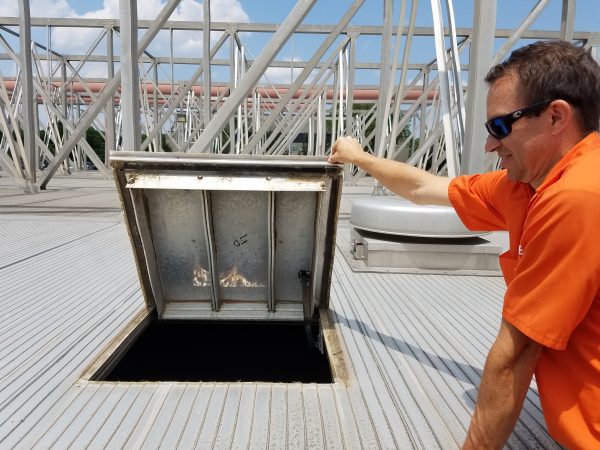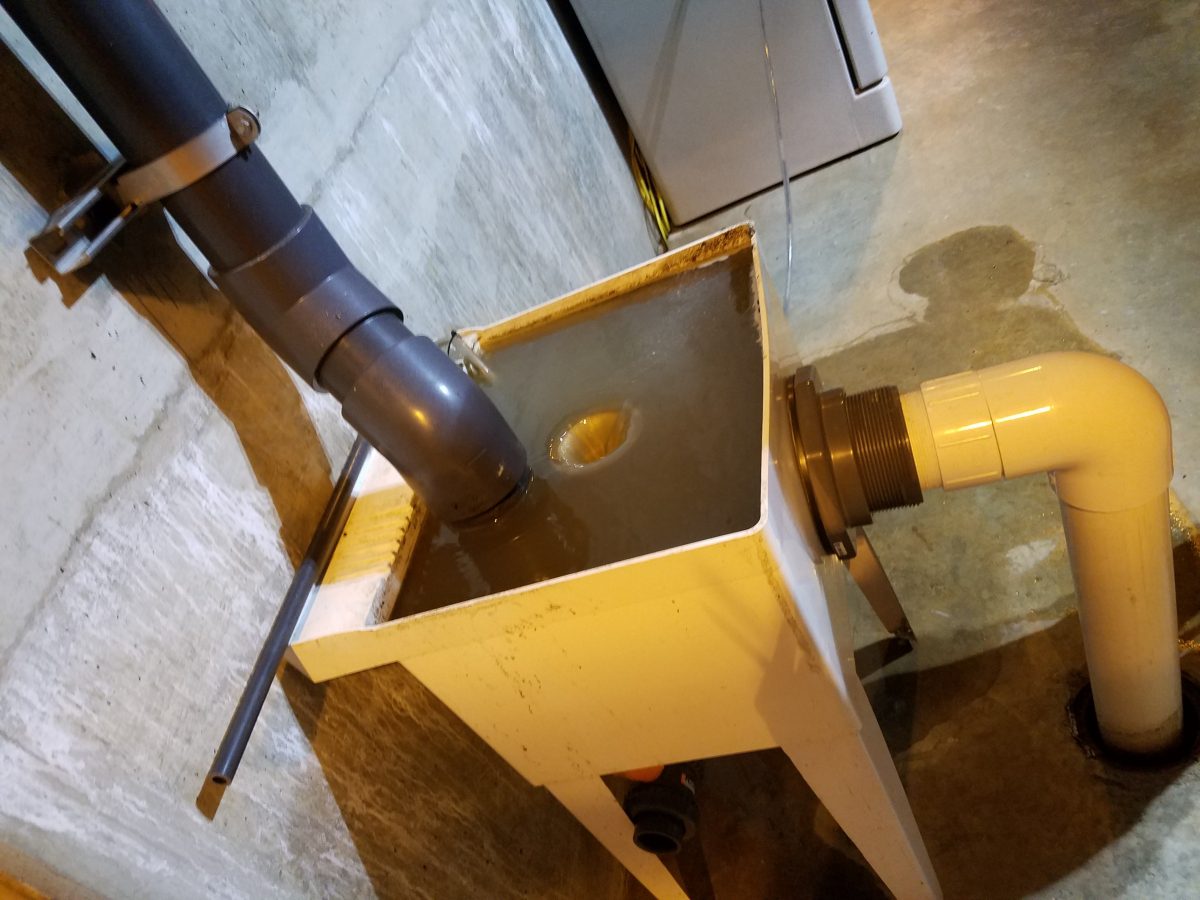Charlotte Water wants to harvest fertilizer from your flushes

Wash, brush, flush: As the local population booms, more people than ever are using Charlotte’s water for the daily essentials of life.
And all that wastewater swirling down innumerable drains has to be treated – more than 78 million gallons a day, on average. Now, for the first time, Charlotte Water is planning to glean and sell a valuable mineral from that river of waste. The utility is hoping to partner with a private company to extract hundreds of tons of phosphorus – a key fertilizer ingredient – at the the utility’s largest facility, the McAlpine Creek Wastewater Treatment Plant in Pineville. It’s a new approach to dealing with the increasing needs of both sanitation and agriculture, by harvesting a valuable resource instead of throwing it away. And, officials said, the stream of phosphorous from our wastewater should be inexhaustible.
“As long as people keep eating food, we’ll keep having phosphorus,” said William Rice, project coordinator for Charlotte Water.
At McAlpine, the treatment facilities stretch for acres in every direction. Some 50 million gallons a day of wastewater, almost two thirds of Charlotte Water’s total, flow in one side dirty and cascade, clean, back into McAlpine Creek every day. A sweet, earthy smell hangs over the plant, even though the most odiferous tanks – those full of raw sewage – are covered, so the air emanating from them can be scrubbed before it reenters the atmosphere. Rice lifted a hatch to give a peek inside at the churning mixture.
“I think it’s very important to see raw wastewater,” he said, pointing out that the cocktail is less offensive than what you would encounter in a stadium Porta-Potty. “It’s not nearly as terrible as people think.”
That wastewater doesn’t just contain waste: It’s also full of potential resources. Here’s how it works: As wastewater moves through the initial treatment phases at McAlpine, the solids are separated from the liquids, processed biologically, and digested by microorganisms. What’s left then passes through giant centrifuges to spin out much of the remaining water. The resulting solids, or sludge, are stored in a giant warehouse that smells like a stockyard, until the sludge is spread on farmers’ fields.
The water that’s left over from the centrifuges is called “centrate.” A dark, grey liquid the color of heavily soiled dishwater, the centrate is rich in phosphorus. Charlotte Water has to process the centrate with chemicals to bind and neutralize that phosphorus, because large amounts of the mineral can’t just be dumped into McAlpine Creek – the mineral is a pollutant that causes algae blooms and other harmful effects.
“Too much nitrogen and phosphorus in the water causes algae to grow faster than ecosystems can handle. Significant increases in algae harm water quality, food resources and habitats, and decrease the oxygen that fish and other aquatic life need to survive,” according to the Environmental Protection Association.

Centrate being drained from a “de-watering” centrifuge at the McAlpine Creek Wastewater Treatment Plant. Photo: Ely Portillo.
To treat phosphorus in the water at the McAlpine plant, Charlotte Water spends more than $1 million a year on chemicals that bind and neutralize the mineral. But phosphorus isn’t just a pollutant: It’s also a key ingredient in fertilizer.
To get the mineral, companies mine huge amounts of phosphate rock ore – 270 million tons worldwide in 2018, according to the US Geological Survey – which is then refined into phosphorus. That’s up from 167 million metric tons a decade ago, a reflection of increasing agricultural use to feed a hungry world.
“There are no substitutes for phosphorus in agriculture,” the USGS notes.
There are more than 70 large-scale phosphorus recovery plants operating worldwide, according to the International Water Association, including others in the Southeast. Most in the US are public-private partnerships, similar to what Charlotte is proposing. In 2015, Gwinnett County partnered with Ostara, a Canadian firm that builds and operates phosphorus recovery plants and turns it into fertilizer, to extract the mineral. The city of Atlanta signed on in 2018 for a similar project at its R.M. Clayton Water Reclamation Center that will produce about 900 tons of phosphorus annually.
In 2016, Chicago opened a facility – also operated by Ostara – to recover phosphorus at its Stickney Water Reclamation Plant, which processes an average of 700 million gallons a day. The plant generates about 10,000 tons of phosphorus a year.
“The recycling of recovered (phosphorus) products as a fertilizing material can save the costs of sludge disposal and leads to the significant reduction of plant operating expenses,” wrote Hisao Ohtake, a professor at Osaka University in Japan who promotes phosphorus recovery, for the IWA.
Under the proposed plan, Charlotte Water would enter into an agreement with a private company to build and operate a phosphorus recapture facility at McAlpine, pulling shiny, white flakes of the mineral out of the gray centrate water. Instead of neutralizing and then flushing valuable phosphorus – which would otherwise have to be mined – that natural resource would be reused.
Charlotte Water estimates it can recover about 700 to 800 tons annually of phosphorus at McAlpine. The private company operating the plant company would sell the phosphorus to fertilizer makers, while Charlotte Water would save money on its chemical bill. Rice said that the fee paid to the private company could equal up to roughly $1 million a year, while the utility’s savings on chemicals would be roughly similar. Depending on how the deal unfolds, Charlotte Water could end up netting anywhere from zero to $500,000 a year.
The utility will put out a request for qualifications, and either select a firm from the responses or move to a full request for proposals in the coming months.
Charlotte Water Director Angela Lee said at a recent City Council meeting that partnering with a private company to build and operate the plant will allow Charlotte Water to host a project it might not otherwise have the funding or expertise to create. The plant could cost $10 million to $15 million to build.
“P3 (public-private partnership) is a way to finance technology that’s not a part of our core competency,” she said. “We are not in the nutrient-harvesting business.”
A phosphorus recapture plant would be the second environmentally friendly attempt to reuse byproducts at McAlpine Wastewater Treatment Plant. Charlotte Water opened a small power plant onsite two years ago, where a converted 20-cylinder engine runs on methane gas harvested from the bacteria breaking down waste.
The plant generates 1 megawatt of electricity, which Charlotte Water sells to Duke Energy, and heat from burning the gas is also captured to keep the “digesters” that process wastewater hot enough to operate. That methane – about 900 pounds a day – is otherwise burned off, uselessly, in a flare.